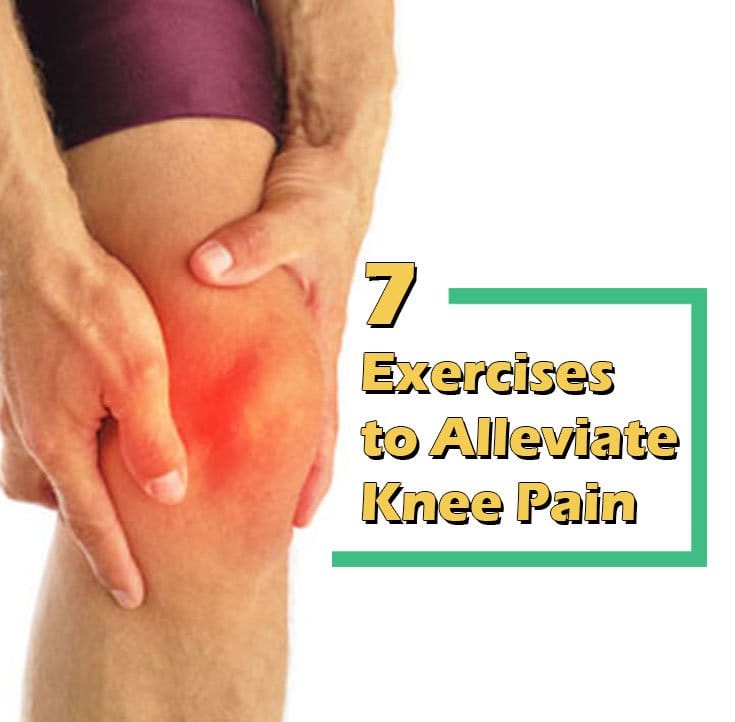If your knees are giving you problems when getting out of bed or during your daily activities, you are not alone. Numbers show that nearly 50 million Americans feel the same way. In fact, knees are the most commonly injured joints in the body – which shouldn’t come as much of a surprise, considering their everyday use, causing wear and tear. Simply walking up the stairs, for example, puts pressure on the knee joints equal to 4 times your body weight. And we’re not getting better either: a 2013 study reported a 162 percent increase in knee replacements over the last 20 years in people 65 and older.
Even of you don’t feel pain currently you are not safe yet. Factors like inactivity, carrying too much bodyweight, poor posture, improperly treated injuries, and insufficient nourishment can all contribute to future knee pain.
But, it’s never too late to do something about it. Just as a rusty door hinge can revert to its original glory with care and maintenance, your knees can be trouble free too.
The simple secret is exercising the muscles surrounding the knee joints – the quadriceps (front thigh muscle), the hamstrings (back thigh muscles), the abductors (outside thigh muscles) and the adductor (inside thigh muscles). This means you want to think about stretching all the tissues around the knees. Exercising these muscles will keep them strong and less susceptible to injury. Exercising often will also help keep your joints from stiffening, providing you with needed support, making movement easier and reducing pain.
These simple exercises will both help you stretch and strengthen the knee area.
1. Straight-Leg Raise (Lying)
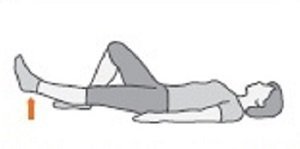
Easy strengthening exercises, like leg raises, put little to no strain on your knee but also activate and strengthen quadriceps.
Lie face-up with one knee bent and the other leg the ground in front of you. Lift your straight leg up approximately one foot, rotating your leg outward (the entire leg rotates outward, so toes point on a diagonal instead of straight up to the ceiling). Do 3 sets of 10 to 15 reps, alternating legs. As you get stronger, add ankle weights up to 10 pounds.
2. Step Ups
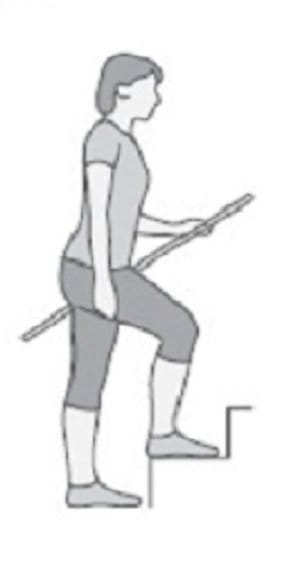
Stepping at the bottom step of a staircase with your right foot, bring up the left foot, then step down with the right foot, followed by the left foot. Repeat, this time raising your left foot first to the stair above. Hold onto the banister if necessary and continue to repeat this exercise until you are out of breath.
3. Knee Squats
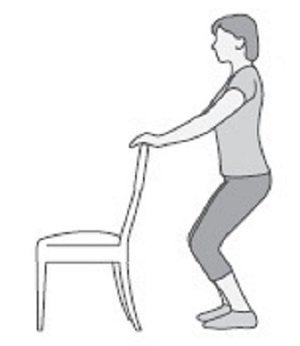
Hold onto a chair for support. Squat down until your kneecap covers your big toe. Return to standing. When you are first starting, complete 10 repetitions. Then, as you improve, try to squat a little further, just be sure not to bend your knees beyond a 90 degrees angle.
4. Leg Cross
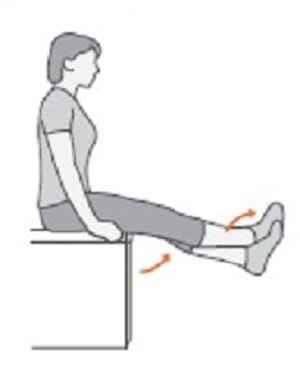
Sit on the edge of a table or bed. Cross your ankles over and push your legs upwards, until your thigh muscles feel tense. Hold for 10 seconds and then relax. Switch your legs and repeat. Do 4 sets with each leg.
5. Leg Stretch
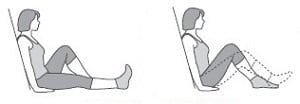
Sit on the floor with the legs stretched out in front of you. Slowly bend one knee, until you feel a comfortable stretch. Hold for 5 seconds. Then straighten you leg as much as you can and hold for another 5 seconds. Repeat 10 times with each leg.
6. Straight-Leg Raise (Sitting)
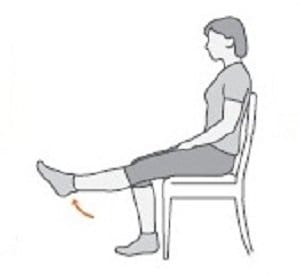
Sit comfortably in a chair. Be aware of your posture. Straighten and raise one leg. Hold for a slow count to 10, and then slowly lower your leg. Repeat 10 times with each leg. If over time you find this easy, try the exercise with light weights on your ankles, toes pointing towards you. Do this exercise every time you sit down.
7. Sit/Stands
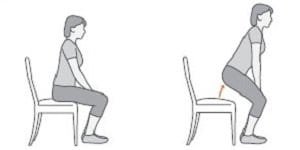
Sit on a chair. Stand up and then sit back down without using your hands for support. Ensure that each movement is slow and controlled. Repeat this exercise for a total of 1 minute. Over time, as you feel more comfortable, try to increase the number of sit/stands in 1 minute and try the exercise from a lower chair, or the bottom steps of a staircase.
Source


